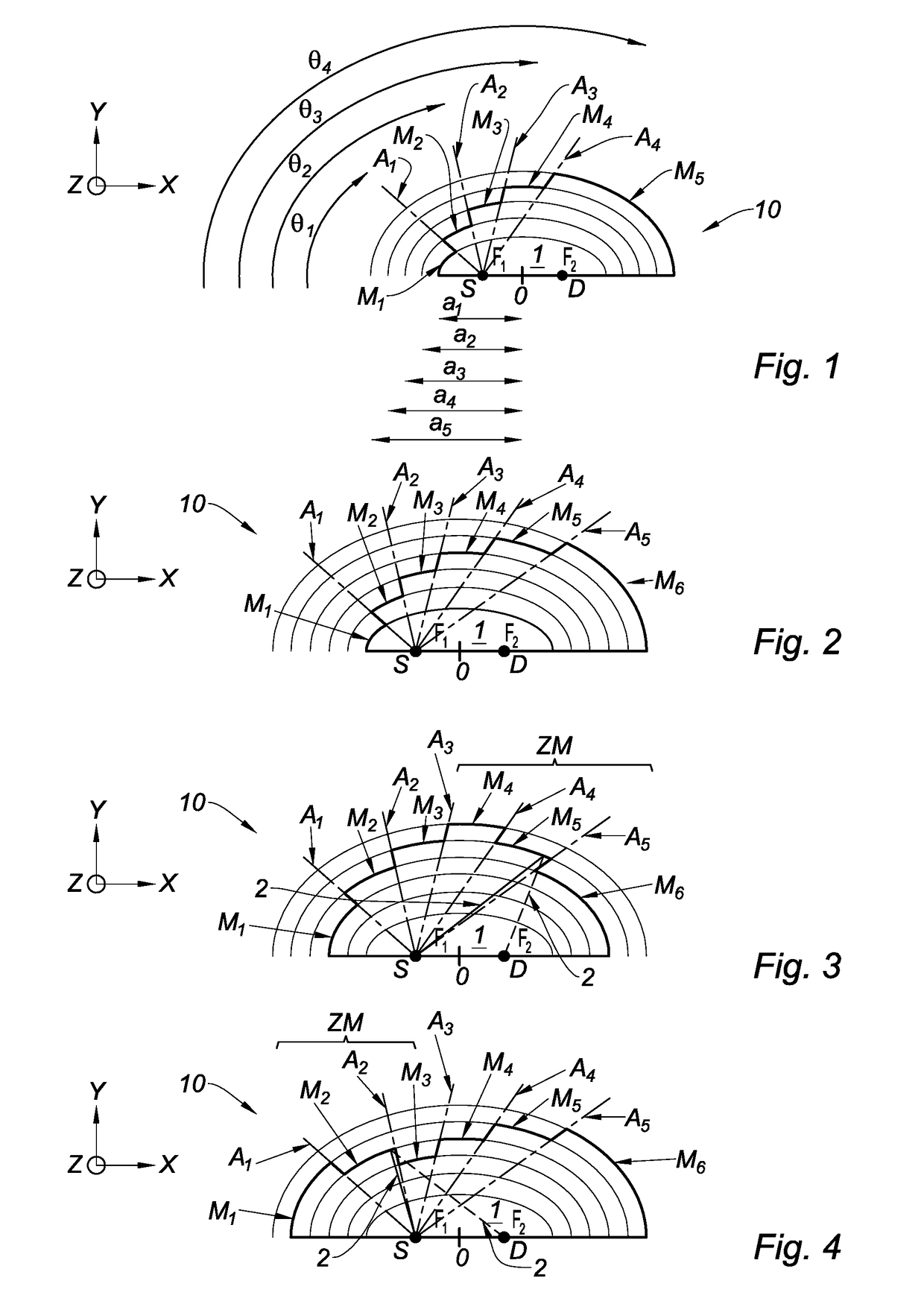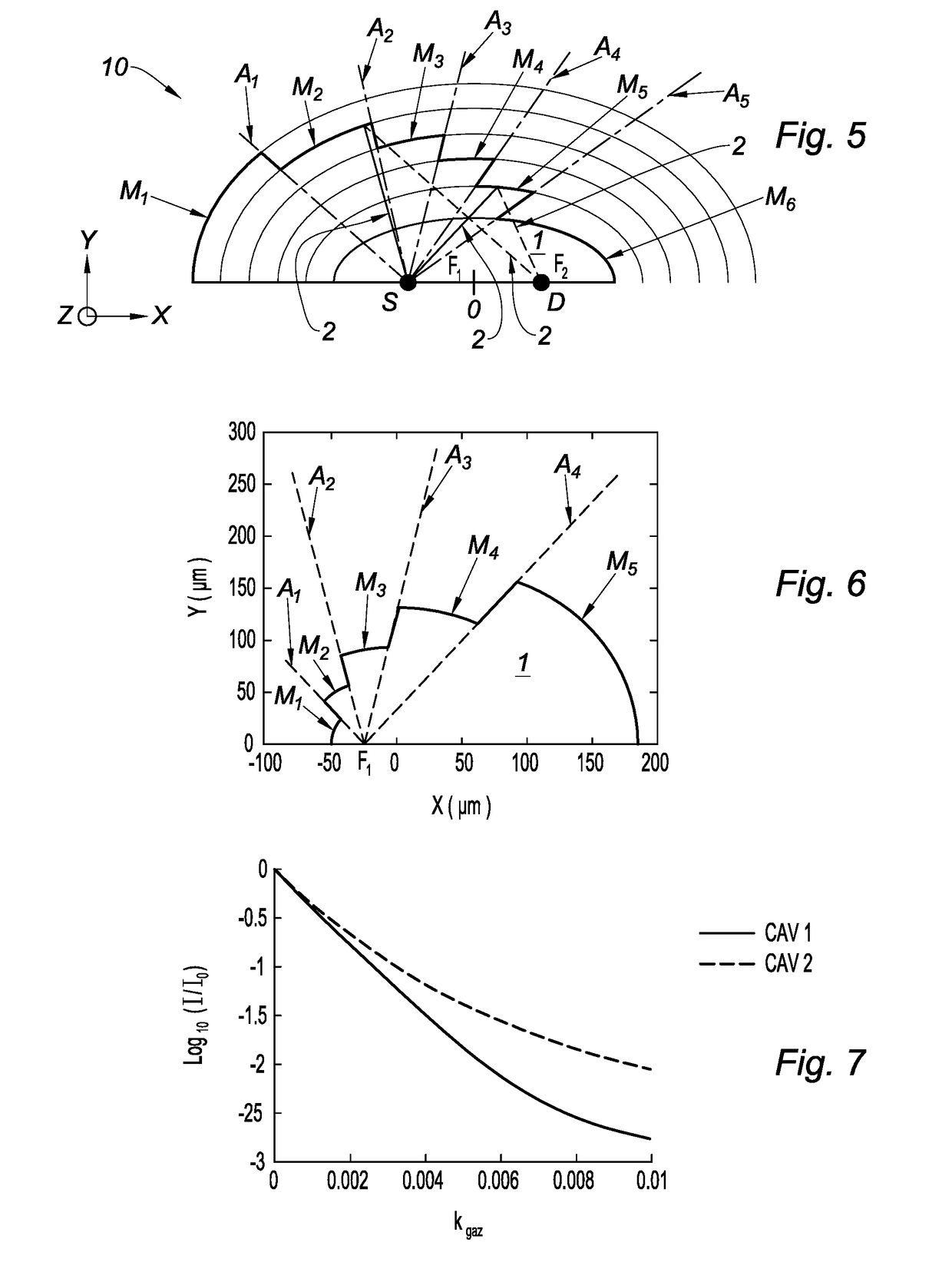Optical cavity with strong dynamic
a cavity and optical technology, applied in the field of optical cavities, can solve the problems of insufficient extent of the detectable concentration area of the cavity of the prior art, and achieve the effects of reducing the thickness increasing the compactness of the optical cavity, and achieving the same optical efficiency
- Summary
- Abstract
- Description
- Claims
- Application Information
AI Technical Summary
Benefits of technology
Problems solved by technology
Method used
Image
Examples
embodiment example
[0080]In the example illustrated in FIG. 6, the set of elliptical mirrors includes five elliptical mirrors M1 to M5 (N=5). The elliptical mirrors M1 to M5 are arranged consecutively from the first common focal point F1 toward the second common focal point F2 such that the consecutive semi-major axes form a strictly increasing geometric sequence, satisfying:
an+1=q an
[0081]where:[0082]n is a natural number between 1 and N−1, namely a natural number between 1 and 4,[0083]the semi-major axis of the elliptical mirror M1 satisfies: A1=50 μm,[0084]q is the ratio of the geometric sequence satisfying: q=G log(G), with G=2.
[0085]FDTD (“Finite Difference Time Domain”) simulations have been carried out with a wavelength (denoted A) of the light radiation 2 equal to 4.5 μm. The optical cavity 1 is immersed in a fictitious medium, representing a gas, the refractive index real part of which is equal to 1, and the refractive index imaginary part of which is denoted kgaz and satisfies:
kgaz=λ4παC
[00...
PUM
| Property | Measurement | Unit |
|---|---|---|
| wavelength | aaaaa | aaaaa |
| wavelength | aaaaa | aaaaa |
| angle | aaaaa | aaaaa |
Abstract
Description
Claims
Application Information
 Login to View More
Login to View More - R&D
- Intellectual Property
- Life Sciences
- Materials
- Tech Scout
- Unparalleled Data Quality
- Higher Quality Content
- 60% Fewer Hallucinations
Browse by: Latest US Patents, China's latest patents, Technical Efficacy Thesaurus, Application Domain, Technology Topic, Popular Technical Reports.
© 2025 PatSnap. All rights reserved.Legal|Privacy policy|Modern Slavery Act Transparency Statement|Sitemap|About US| Contact US: help@patsnap.com


